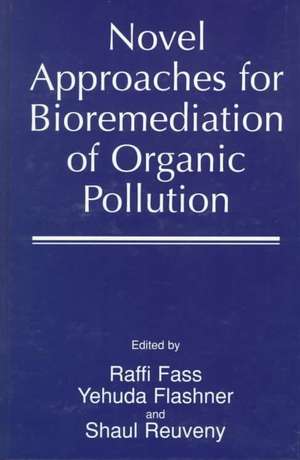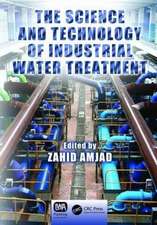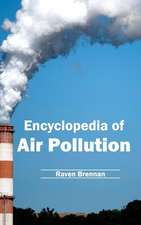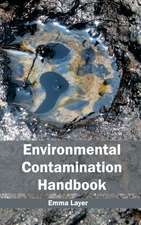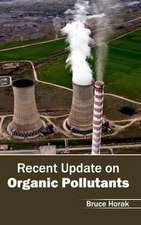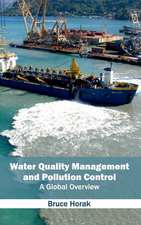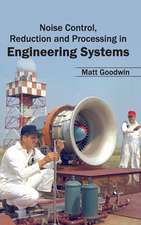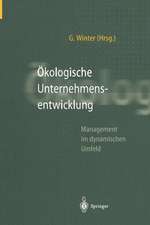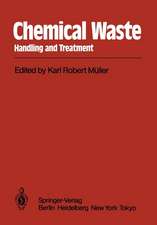Novel Approaches for Bioremediation of Organic Pollution
Editat de Raffi Fass, Yehuda Flashner, Shaul Reuvenyen Limba Engleză Hardback – 30 mar 1999
| Toate formatele și edițiile | Preț | Express |
|---|---|---|
| Paperback (1) | 950.03 lei 6-8 săpt. | |
| Springer Us – 22 oct 2012 | 950.03 lei 6-8 săpt. | |
| Hardback (1) | 957.44 lei 6-8 săpt. | |
| Springer Us – 30 mar 1999 | 957.44 lei 6-8 săpt. |
Preț: 957.44 lei
Preț vechi: 1167.61 lei
-18% Nou
Puncte Express: 1436
Preț estimativ în valută:
183.20€ • 191.30$ • 151.28£
183.20€ • 191.30$ • 151.28£
Carte tipărită la comandă
Livrare economică 15-29 aprilie
Preluare comenzi: 021 569.72.76
Specificații
ISBN-13: 9780306461026
ISBN-10: 0306461021
Pagini: 316
Ilustrații: XI, 316 p.
Dimensiuni: 178 x 254 x 19 mm
Greutate: 0.79 kg
Ediția:1999
Editura: Springer Us
Colecția Springer
Locul publicării:New York, NY, United States
ISBN-10: 0306461021
Pagini: 316
Ilustrații: XI, 316 p.
Dimensiuni: 178 x 254 x 19 mm
Greutate: 0.79 kg
Ediția:1999
Editura: Springer Us
Colecția Springer
Locul publicării:New York, NY, United States
Public țintă
ResearchCuprins
Microbial Breakdown of Persistent Organic Pollutants: Pathways and Enzymes. 1. Chemical Studies of Carbon Tetrachloride Transformation by Pseudomonas Stutzeri Strain KC; T.A. Lewis, R.L. Crawford. 2. Microbial Transformation of Chiral Pollutants Mecoprop and Dichlorprop; H.-P.E. Kohler, et al. 3. The Use of Fungal Laccase for Oxidation of Phosphorothiolates; G. Amitai, et al. 4. MSA Monooxygenase: An Enzyme from Terrestrial and Marine Bacteria which Degrades the Natural Sulfonate Methanesulfonate; W. Reichenbecher, et al. 5. Bacterial Fluoranthene Degradation: Indication for a Novel Degradation Pathway; K. Rehmann, et al. 6. Strategies for the Aerobic Biodegradation of Dinitrotoluenes; S.F. Nishino, J.C. Spain. 7. The Degradation of Nitrate Ester Explosives and TNT by Enterobacter cloacae PB2; C.E. French, et al. 8. Cross Induction of 4-Nitrobenzoate and 4-Aminobenzoate Degradation by Burkholderia cepacia Strain PB4; C.M. Peres, et al. 9. Mineralization of Azo Dyes Under Integrated Anaerobic/Aerobic Conditions; N.C.G. Tan, et al. Genetic Design of Engineered Degradative Microorganisms. 1. Microbial Enzymes in Biodegradation; L.P. Wackett. 2. Engineering Hydrolases for the Conversion of Halogenated Aliphatic Hydrocarbons and Epoxides; D.B. Janssen, et al. 3. Ferredoxin-Mediated Reactivation of Catechol Dioxygenase Improves Aromatic Ring Cleavage in Pseudomonads; Y. Jouanneau, et al. 4. Directed Evolution of a Bacterial Pesticides Degrading Enzyme; Y. Flashner, et al. 5. Prokaryotic Whole-Cell Living Bioreporters Expressing Bioluminescence upon the Presence of Bioavailable Concentrations of Specific Pollutants: An Overview; M.C.M. Jaspers, et al. 6. Active Biological Containment for Bioremediation in the Rhizosphere; C. Ramos, et al. Bioaccessibility - Microbial Colonization and Availability of Substrates and Nutrients. 1. Bioremediation of High Molecular Weight PAHs. Application of Techniques in Bioaugmentation and Bioavailability Enhancement; P.H. Pritchard, et al. 2. Role of Acinetobacter Bioemulsans in Petroleum Degradation; E. Rosenberg, et al. 3. Bacterial Monitoring of a Crude Oil-Contaminated Soil Undergoing Laboratory-Scale Bioremediation; P. Wattiau, et al. 4. Bioavailability of 1,2,3,4-Tetrachlorodibenzo-p-dioxin (TCDD) for Dechlorination by an Anaerobic Microbial Consortium, in the Presence of Dissolved Organic Carbon: Preliminary Results; M. Toussaint, et al. 5. Biotic and Abiotic Factors Involved in Bioavailability of Pollutants ; Y. Henis. 6. Biodegradation of Organic Pollution Involving Soil Iron (III) Solubilized by Bacterial Siderophores as an Electron Acceptor: Possibilities and Perspectives; A.A. Kamenev, et al. 7. 13C/12C Stable Isotope Fractionation of Toluene by Anaerobic Degradation. A New Method to Monitor Biological Degradation In Situ; R.U. Meckenstock, et al. 8. Biodegradation of Atrazine in Contaminated Sub-Soil and Wastewater by Whole Cells of Pseudomonas sp. strain ADP and by the Enzyme Atrazine Chlorohydrolase; R.T. Mandelbaum, et al. Process Development and Field Studies. 1. Field Application of a Genetically Engineered Microorganism for Polycyclic Aromat
